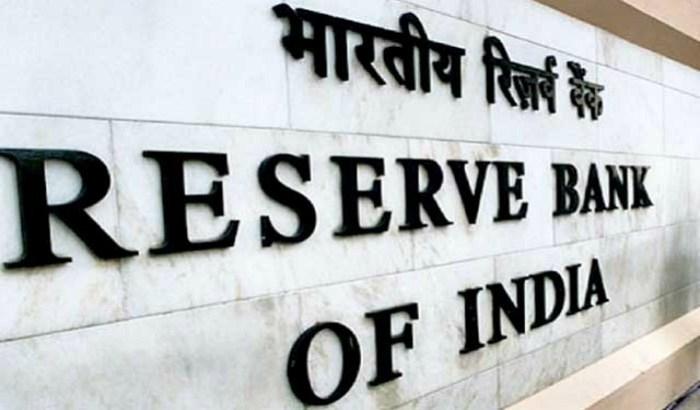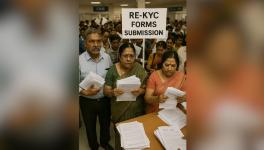A Dangerous Move on Banks

Image Courtesy: News Time Now
The BJP government, it appears, cannot remain content without inflicting irreparable damage on the institutions of the Indian economy. Its latest move in this direction is the Financial Resolution and Deposit Insurance (FRDI) Bill which was introduced in parliament on the last day of the winter session and is now with a select committee. What this bill proposes is the setting up of a Resolution Corporation, consisting largely of central government officials,which, in the case of stressed banks whose condition is considered “critical”, will use creditors’ money, including that of depositors, to overcome the default by borrowers.
Until now it was the budget of the central government, the owner of the nationalised banks, which was supposed to be used for their “bail out”; now, however, the idea is not to have a “bail out” but a “bail in”, ie, not to have central government help for supporting distressed financial institutions but creditors’ funds, including those of depositors.
Currently all deposits upto Rs 1 lakh are insured by banks themselves, so that there is no risk of loss to these depositors in the event of a bank failure. The Deposit Insurance and Credit Guarantee Corporation, a subsidiary of the Reserve Bank of India, which covers such depositors is proposed henceforth to be wound up; and no other institution has been suggested in its place in the bill.
More importantly, however, it is not just the existence of this Corporation that instilled confidence among depositors about the safety of their deposits with the nationalised banks; it was the fact that the banks were government-owned, the conviction that the government would never let these banks fail. It is this confidence which made millions of depositors, especially pensioners and senior citizens, hold their wealth in the form of bank deposits, even though such deposits offered comparatively lower rates of return than shares, mutual funds and many other assets. This confidence will now disappear.
In the old days people used to hold cash in boxes, since they had little confidence in the banking system which was controlled in their perception by a set of unknown private operators with no scruples. Bank nationalisation changed all that, and an enormous amount of deposits got mobilised across the country because of the confidence it generated among people that these banks, being owned by the government, would never let depositors down, that depositors’ money was totally safe in these banks.While this confidence is now set to be undermined, demonetisation, with Modi’s explicit promise that the experiment will be repeated from time to time, has served ironically to undermine people’s confidence in currency as well as the same time. (Though demonetisation does not necessarily involve an actual monetary loss, it means standing in long queues and going through a lot of hassles, even if we ignore the inconvenience it causes by the temporary relinquishing of purchasing power).
Hence money in both its forms, currency and bank deposits, is now no longer going to be considered a safe asset to hold. Since the FRDI Bill also covers State-owned insurance and other financial companies, their liabilities too, like bank deposits, would lose their attractiveness for numerous small wealth-holders. In an economy in which people’s confidence in money and these other financial assets is sapped, assets like gold or land or physical commodities become the favoured forms of wealth-holding, because they are considered comparatively “safe”. A shift from money to these latter assets constitutes a retrogression in economic terms; this is what the BJP government is bringing about.
To be sure, the FRDI Bill is not a brainchild of the BJP government. It is based on the recommendations of a Financial Stability Board which was set up in the wake of the 2008 global financial crisis to ensure that financial systems caught in such crises in future did not need rescuing through budgetary resources, as the US financial system had done at that time. India was one of the G-20 countries that accepted the Financial Stability Board’s recommendations, and the FRDI Bill is the outcome of this acceptance.
But there is a fundamental difference between tax-payers’ money being used for rescuing a privately-owned financial system and its being used for rescuing a government-owned financial system; the former lacks legitimacy but not the latter. In fact the government can come into the picture much earlier to prevent the banks it owns from getting saddled with “toxic” assets, so that the very question of banks needing to be rescued through tax-payers’ money should not arise at all, and certainly not on the scale of the banks in the advanced countries at that time. It is not surprising that even at that time the exposure of nationalised banks in India to the “toxic” assets was so minuscule that hardcore private-sector-enthusiasts too had to concede that bank nationalisation had stood India in good stead.
Hence the very idea of adopting in India measures devised in the advanced capitalist countries, despite our having a very different financial system, whether these measures are the Basel “capital adequacy norms” (for meeting which the nationalised banks are supposed to dilute the share of government equity), or the institution of a “bail-in” programme in the place of a “bail-out”, is quite absurd. But the BJP government, lacking any imagination of its own in economic matters and blindly pursuing whatever course the neo-liberal “pundits” hand down to it, fails to see this.
Arun Jaitley has assured the public that depositors’ interest will be protected; but it is not clear how. The FRDI Bill lists those to be protected, in the event of a bank being in a critical condition, in order of priority; and uninsured depositors come fifth in this list. Even in their case, no doubt, the government claims that they would not lose their deposit value; rather their deposits would be converted into equity. In other words, bank are supposed to recapitalise themselves, when they are in a critical condition, by using depositors’ funds under this Bill, rather than by using budgetary resources as now. But this, apart from being of little consolation to depositors, provides a surreptitious route to privatisation of public sector banks.
It is of little consolation to depositors, because the value of such equity will fall precisely when the bank is in such a critical state that deposits have to be converted into equity; the depositors therefore will lose much of their wealth anyway. Additionally, they are likely to sell off this equity to private corporate entities to get back at least a part of their money, and this will mean a privatisation of public sector banks. A bunch of government nominees on the Resolution Corporation in other words can so orchestrate a public sector bank’s financial credibility that it can pass into private hands, and even into private corporate hands at throwaway prices, without the parliament coming into the picture at all, and entirely at the whim of the executive.
But then, it may be asked, is it “fair” to use “tax-payers’ money” for rescuing banks? The principled answer to this is “yes”, provided banks are playing their assigned social role. It is not “fair” if banks are financing speculative bubbles and come to grief for that reason; but this is not what public sector banks are supposed to be doing anyway. In other words, “tax-payers’ money” should in principle be available for rescuing public sector banks, but there must be democratic control over the activities of such banks. Being State-owned alone is not enough; they must be subject to democratic control in order to be deserving of “tax-payers’ assistance”.
Besides, this entire wedge that is sought to be driven between “tax payers” and “depositors” is a red herring being used for pushing through the FRDI Bill. Notwithstanding all the hullaballoo over non-performing assets of the banks, these assets are no more than about 12 per cent of total bank assets. Almost 90 per cent of such NPAs belong to the nationalised banks; but given the large share of such banks in total banking business, the weight of the NPAs even in their case is not so large as to be alarming. In addition, the government has just announced a Rs 2.11 lakh crore recapitalisation programme. So there is no question of such banks being in any critical condition now, or even in the foreseeable future. To present a bill in parliament that is sought to be justified by a presumed conflict of interest between the “tax payer” and the “depositor” which can only arise in an eventuality that is nowhere on the horizon, and that can be prevented from arising anyway if we are careful, is not just absurd; it is actually quite mischievous.
It is ironical that the government, instead of announcing measures whereby the corporate defaulters on bank loans, who reportedly account for 75 per cent of total NPAs, are made to pay for their misappropriation of depositors’ resources, is announcing measures whereby the depositors would be made to pay for such corporate misappropriation!
Disclaimer: The views expressed here are the author's personal views, and do not necessarily represent the views of Newsclick.
Get the latest reports & analysis with people's perspective on Protests, movements & deep analytical videos, discussions of the current affairs in your Telegram app. Subscribe to NewsClick's Telegram channel & get Real-Time updates on stories, as they get published on our website.























